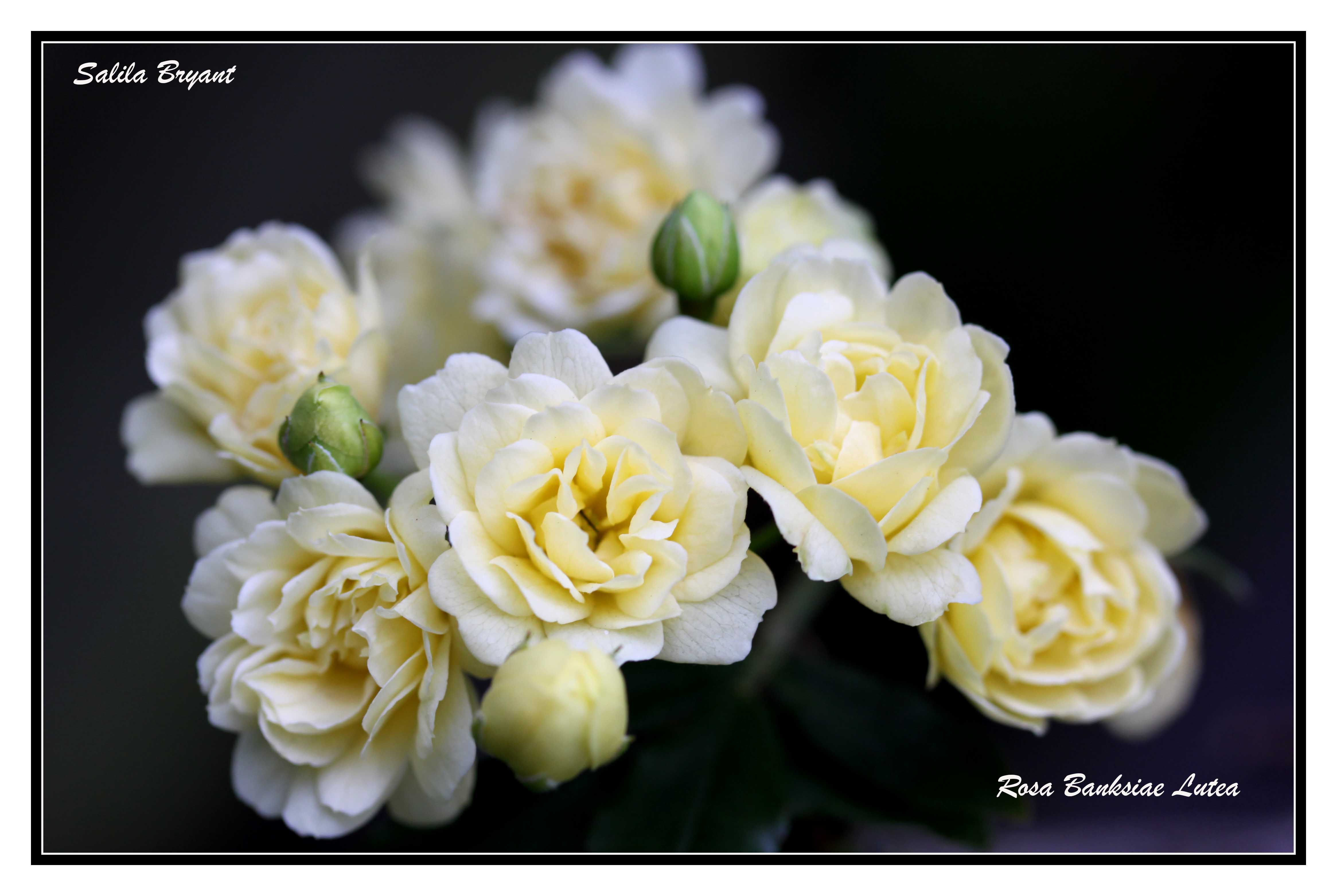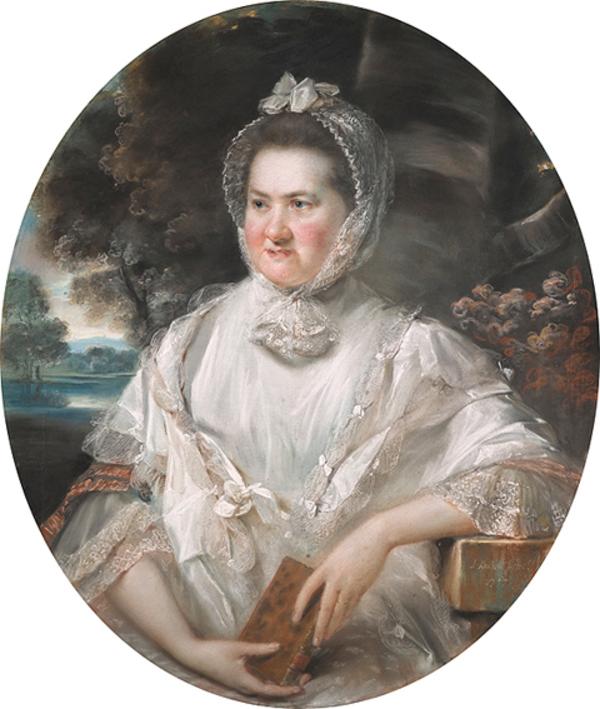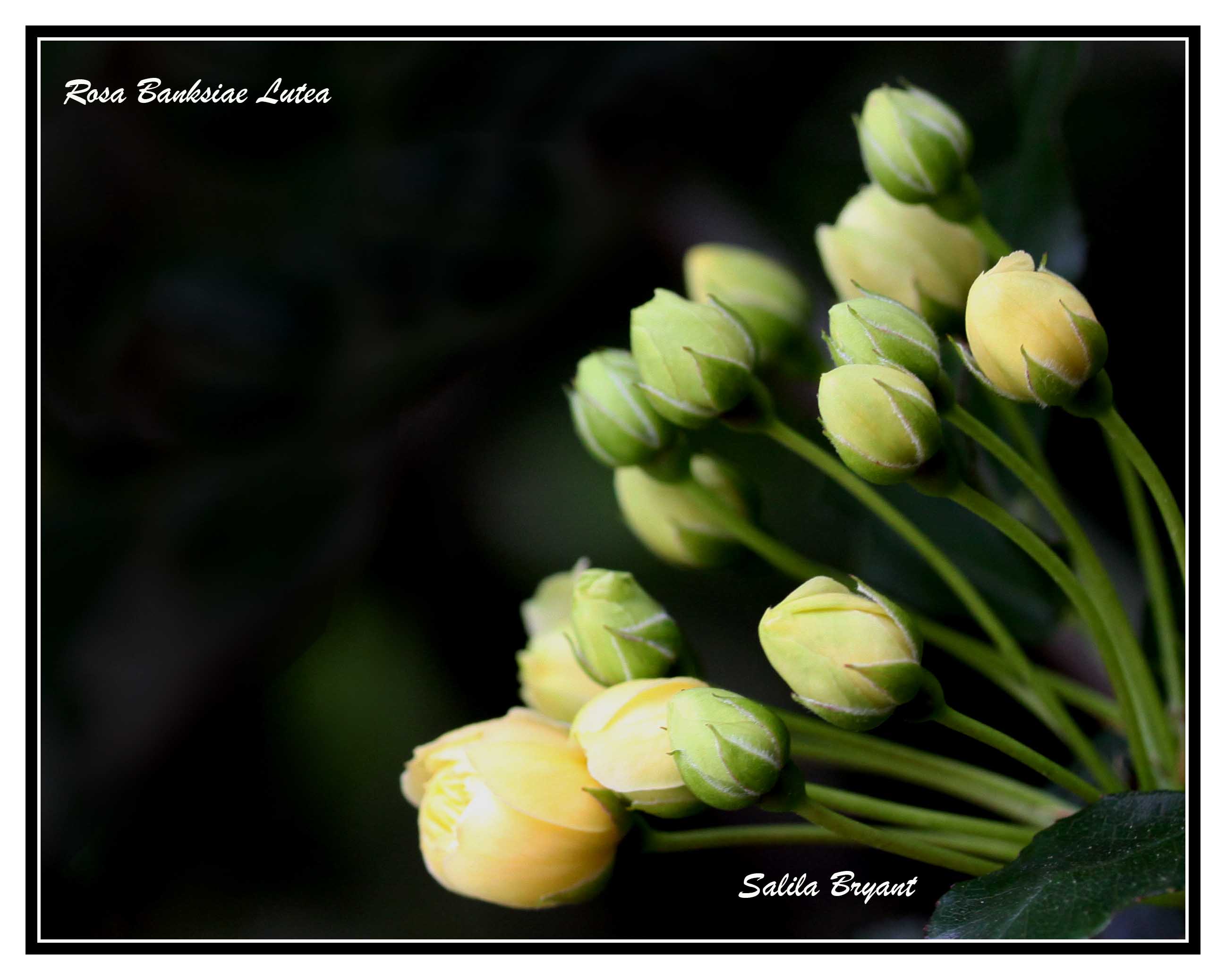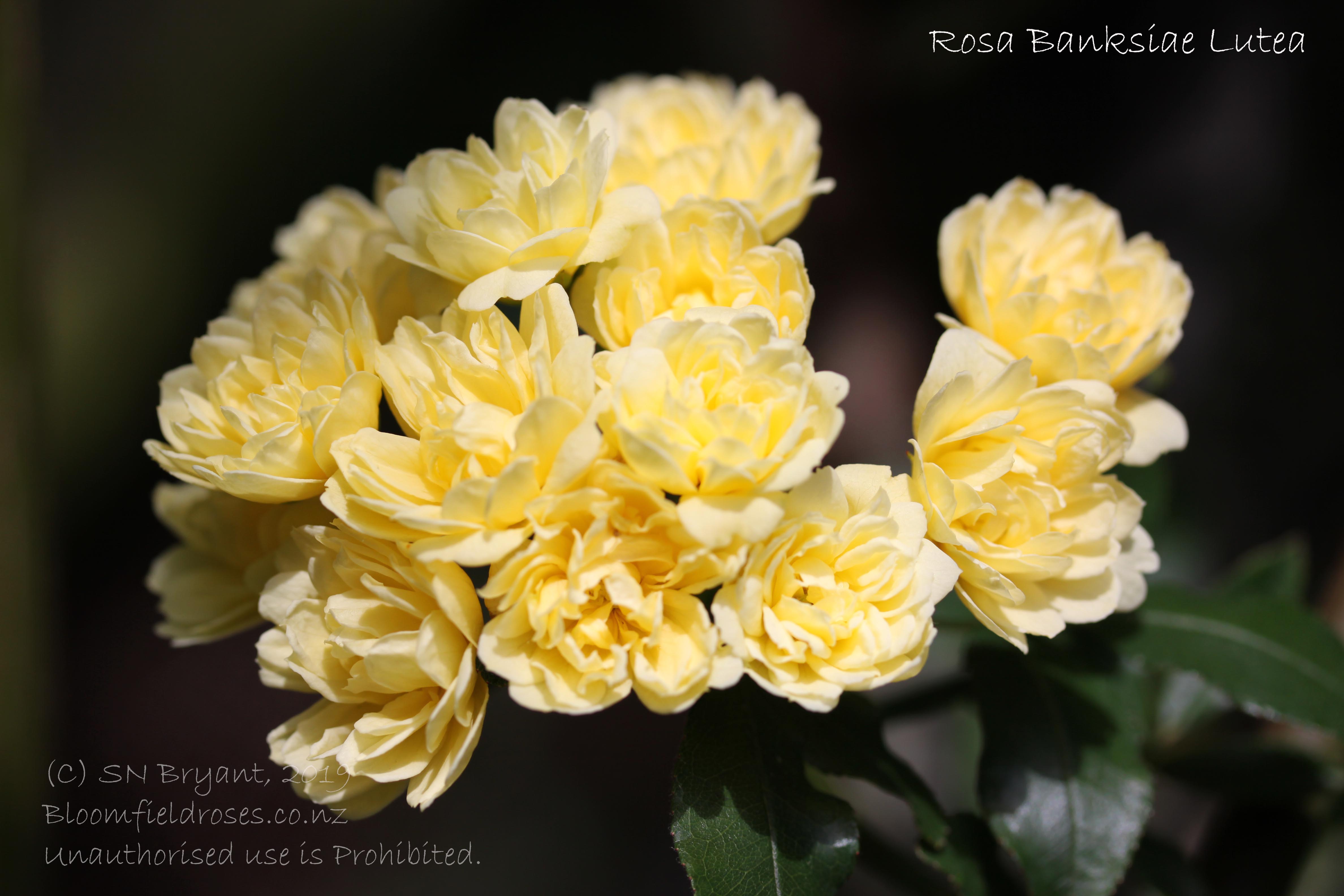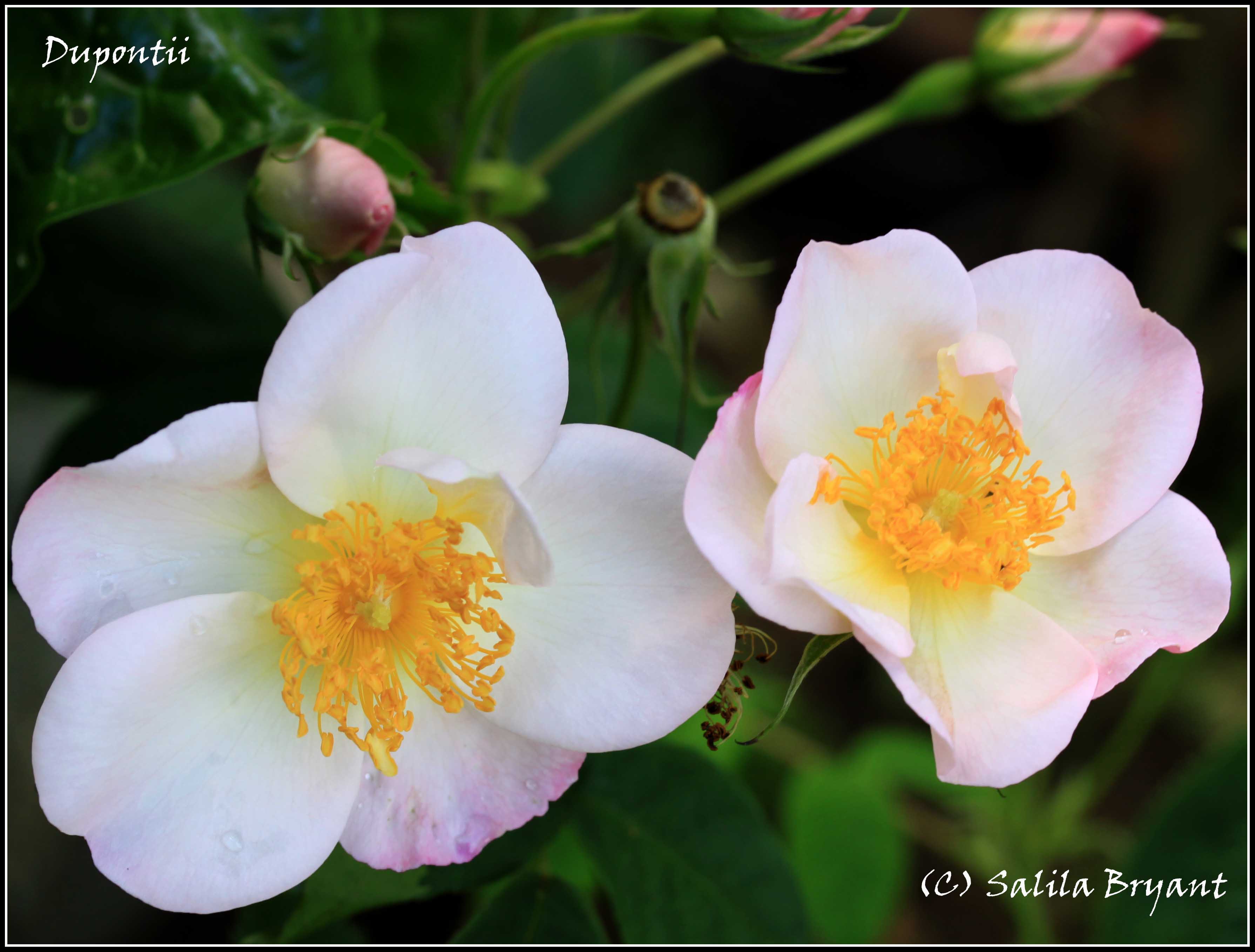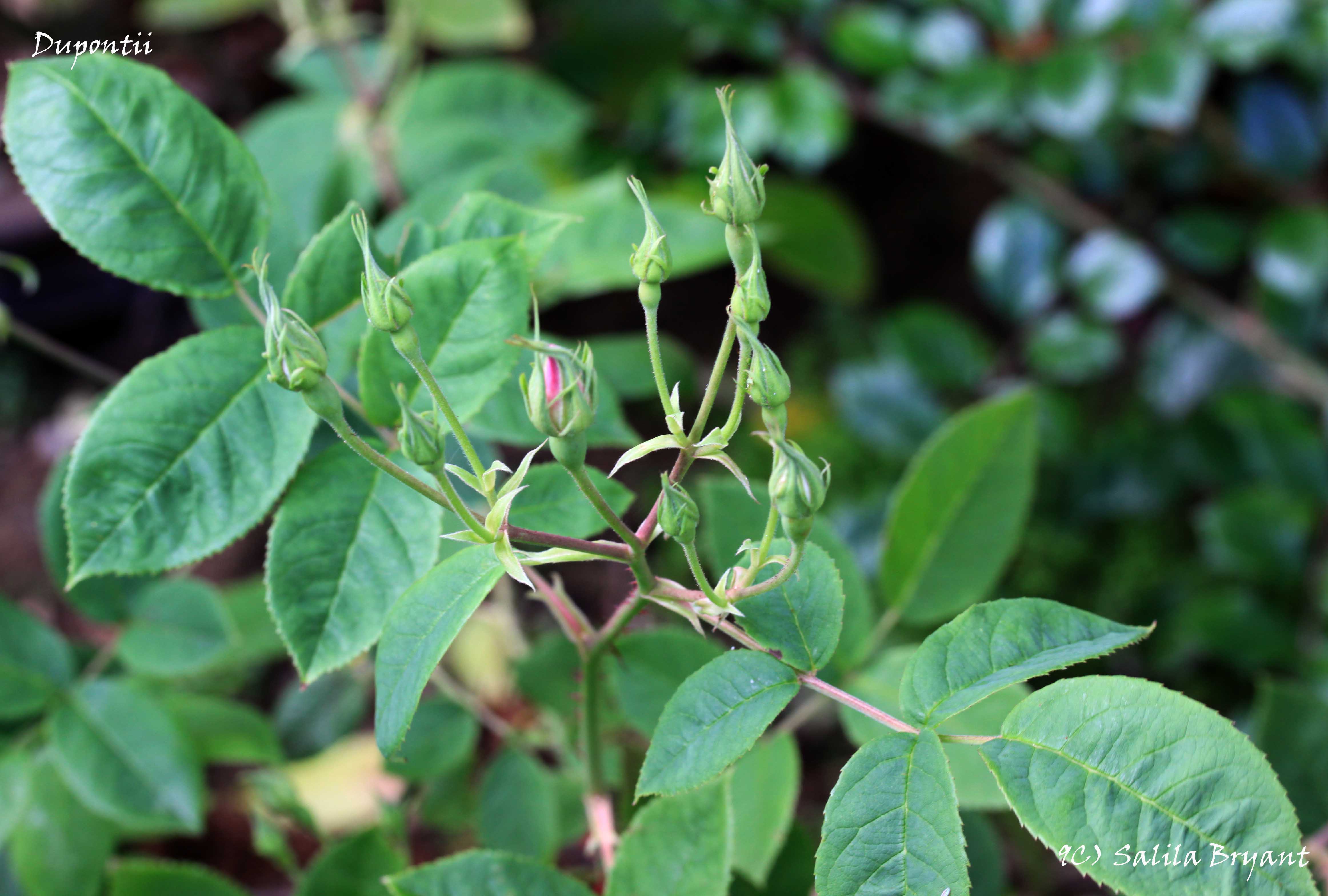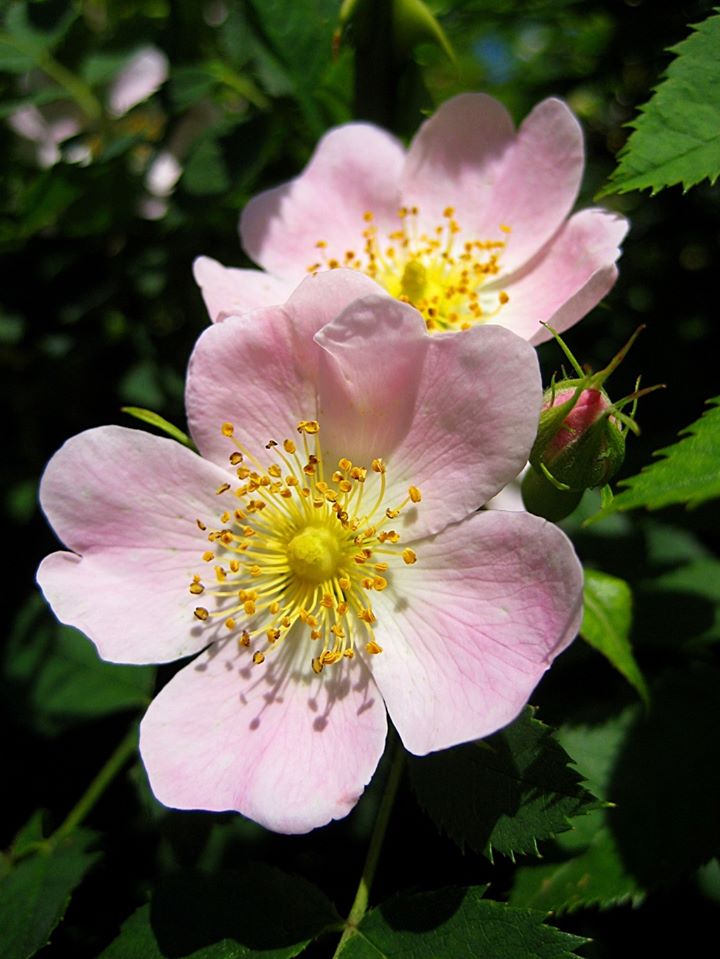
Dog Rose (Source: Wikipedia)
Commonly known as Dog rose, Rosa canina is a wild rose species native to Europe, northwest Africa, and western Asia. It is the most abundant, widespread and variable of all the wild rose species. Once flowering Dog rose is a deciduous shrub about 1 to 5 m in height. It can climb higher into taller trees with the help of its small, sharp, hooked prickles. The leaves are pinnate, with 5–7 leaflets. The flowers are usually pale pink but can vary between a deep pink and white with five petals encircled around a crown of stamens. The flower matures into an oval, red-orange fruit, or hip.
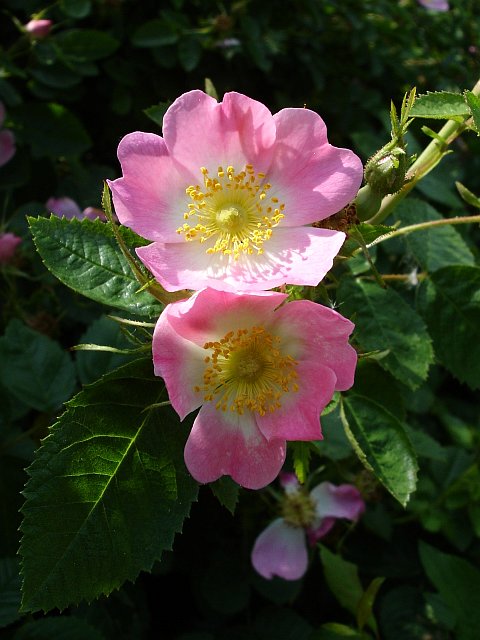
Dog Rose (Source: Wikipedia)
The first record of this flower dates back thousands of years. Hippocrates (460-377 BCE) is said be using it for medicinal purposes. The Academy of Floral Games (founded in 1323) gifted poets a sprig of Dog-rose to reward them for their literary excellence. Due to this ritual, the rose became increasingly popular and was frequently mentioned in several famous poems. The most famous is the quote in William Shakespeare’s “A Mid-Summer Night’s Dream”;
“With sweet musk-roses and with eglantine.“
This rose carries interesting history which is truly fascinating. The Dog rose is the county flower of Hampshire and one of the national symbols of Romania. It is emblem of the Scottish Rose clan.
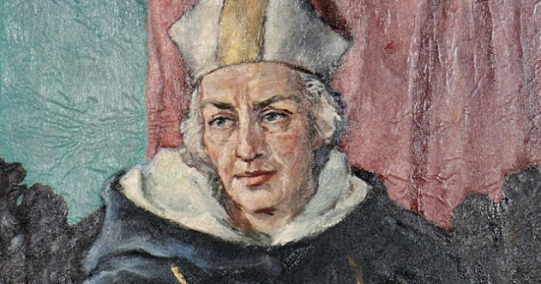
Albertus Magnus (C. 1200 – 1280)
An old riddle, ‘The Five Brethren of the Rose’, provides an effective way of identifying roses of the Canina group:
“On a summer’s day, in sultry weather
Five Brethren were born together.
Two had beards and two had none
And the other had but half a one.“
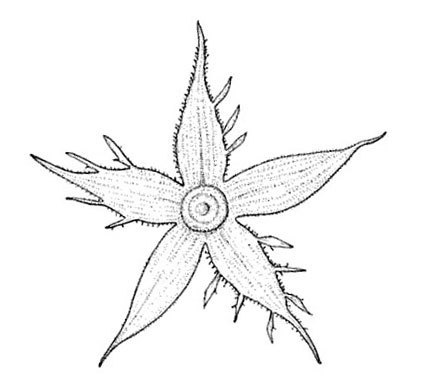
Sepals of the Dog Rose (Source: Bernhardt, 2002)
‘Brethren’ refers to the five sepals of the Dog-rose, two of which are whiskered on both sides, two quite smooth and the last one whiskered on one side only. There are many versions of the riddle in Latin, English and German. It is believed to be written by Albertus Magnus (circa 1200 -1280), a German Catholic fairer and bishop of Regensburg and later canonised as a Catholic saint. He was also an early authority on natural science and soil fertility.
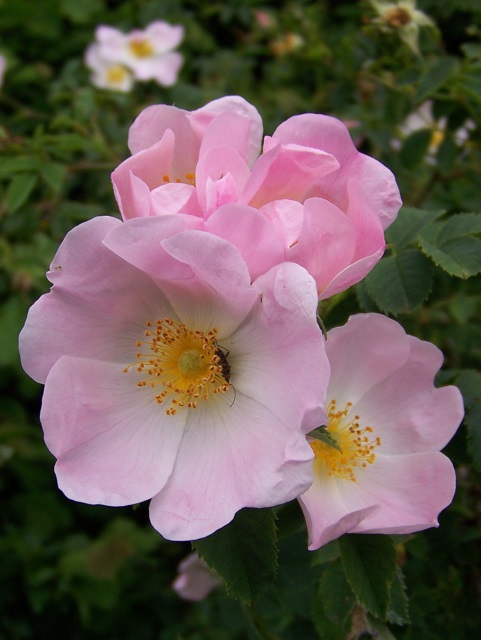
Dog Rose (Source: Penny Moyes, 2006, Wikimedia Commons)
The meaning of the Dog Rose is quite extensive. There are many theories how this rose got its name.
- The dog rose got its name from a 16th-century translation of the Latin Rosa canina, which comes from the Greek ‘kunórodon’, a rebuke that it is not a garden rose, but a wild rose. Hence the word ‘dog’ has a negative connotation, indicating ‘worthless’ as compared with cultivated garden roses.
- Another theory is the rose refers to “pain” as it was believed the medicinal properties of the plant were used to cure the bite of rabid dogs in the 18th and 19th centuries before sophisticated medicines were discovered. The Roman naturalist, Pliny, attributed the name dog rose to a belief that the plant’s root could cure the bite of a mad dog.
- The positive meaning, “pleasure”, stem from its focus around “romanticism”. In medieval times, this Rose was placed at the end of a maiden’s bed to signify a king’s interest in her company. Once the maiden received such a token, she was instructed to sneak into the royal chamber where the king would be waiting for her.
- The origin of the name may also be related to the plant’s hooked prickles that have resemblance to the teeth of a dog.
Today, the Dog Rose reflects a seasonal meaning of awaiting spring since it is one of the first bushes to bloom after the long, harsh and dark winter’s closure.
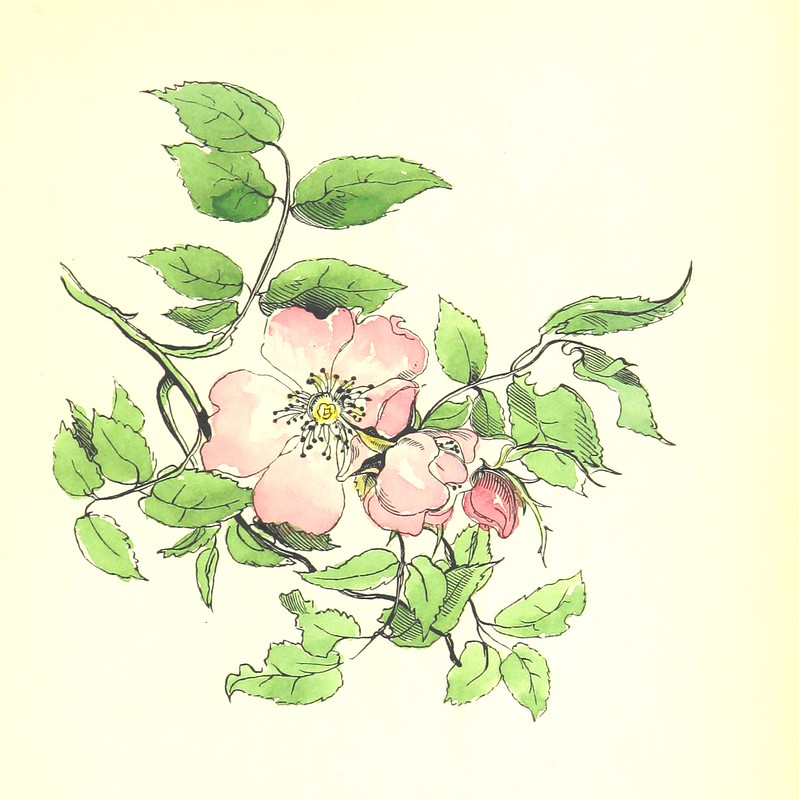
Dog Rose Drawing (Source: Linton, W. J. (1836)
Medicinal Values and Uses
Its medical uses date back to the time of Hippocrates. The roots, foliage, blooms and hips were used in various prescriptions.Fresh shell of the dog rose hips contain high levels of antioxidants, mainly polyphenols and ascorbic acid, as well as carotenoids and vitamins B and E. This rose is well known for its high level of vitamin C.
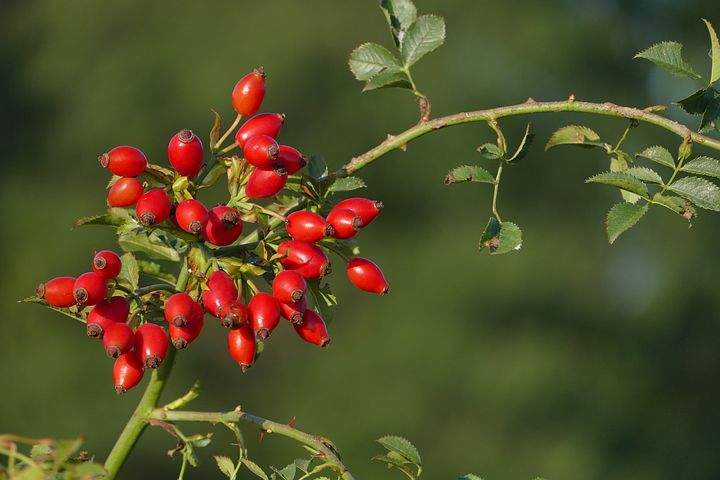
Dog Rose Hips (Source: Pixabay)
Traditionally red hips of this rose have been used to make rose-hip syrup, jam and tea. Syrup made from the Dog-rose hips has four times the Vitamin C of blackcurrant juice and twenty times that of orange juice. In Bulgaria, where this rose grows in abundance, the hips are used to make a sweet wine as well as tea.
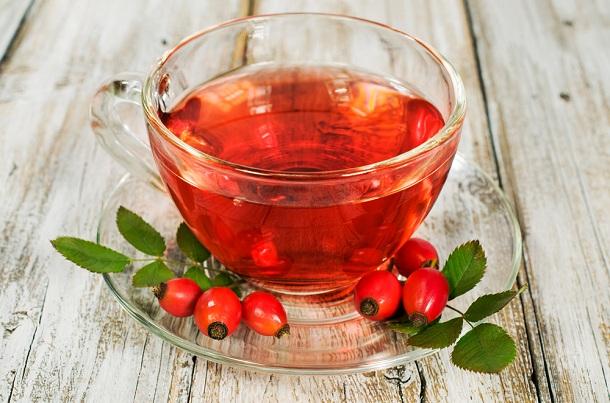
During World War II, the British government encouraged the gathering up of the dog rose hips as a source of Vitamin C, to treat vitamin C deficiency. After the war, In the United States, Rosa canina was planted in victory gardens, and can still be found growing throughout the country, including roadsides and in wet, sandy areas along the coastlines. The Vietnamese novelist, Bao Ninh, in his novel “The Sorrow of War” writes:
“With Canina one smoked
To forget the daily hell of the soldier’s life,
Smoked to forget hunger and suffering.
Also, to forget death.
And totally, but totally,
To forget tomorrow.”
Traditionally, the Dog rose has been used to treat kidney and lower urinary tract disorders as well as arthritis, gout and common colds and their associated fevers. The seeds have been used to remove intestinal worms effectively. Distillation from the dog rose used as an astringent lotion for sensitive skin. Medicinal interest in rose hips has increased as a consequence of research that has explored the potential application of rose hips for treatment of several diseases including skin disorders, hepatotoxicity, renal disturbances, diarrhoea, inflammatory disorders, arthritis, diabetes, hyperlipidaemia, obesity and cancer.
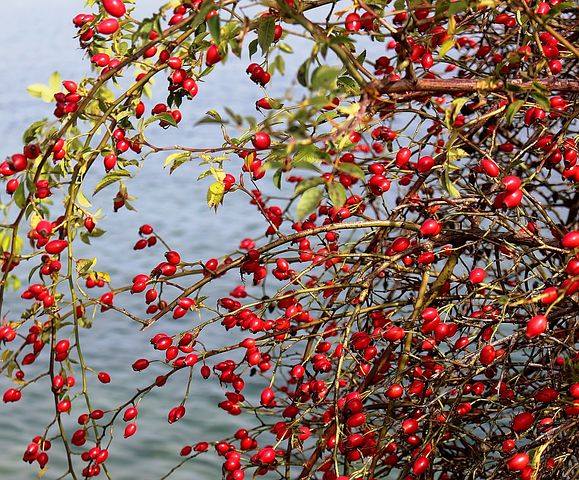 Dog Rose Hips (Source: Pxfuel)
Dog Rose Hips (Source: Pxfuel)
The Dog rose is an invasive species in the South Island of New Zealand. It was recognised as displacing native vegetation as early as 1895. The dog rose is a declared weed in Australia as the plant out-competes native vegetation, provides shelter to pests such as foxes and rabbits, and is unpalatable to farm animals. It is also a biosecurity risk as it hosts fruit fly. Plants reproduce sexually by seed, and vegetatively by suckering and layering. Birds disperse seeds and they may also be carried by waterways. The seeds can also be carried in the hooves of stock animals. When the conditions are right, the seeds of this rose readily sprout without the usual requirement of stratification to break the winter dormant.
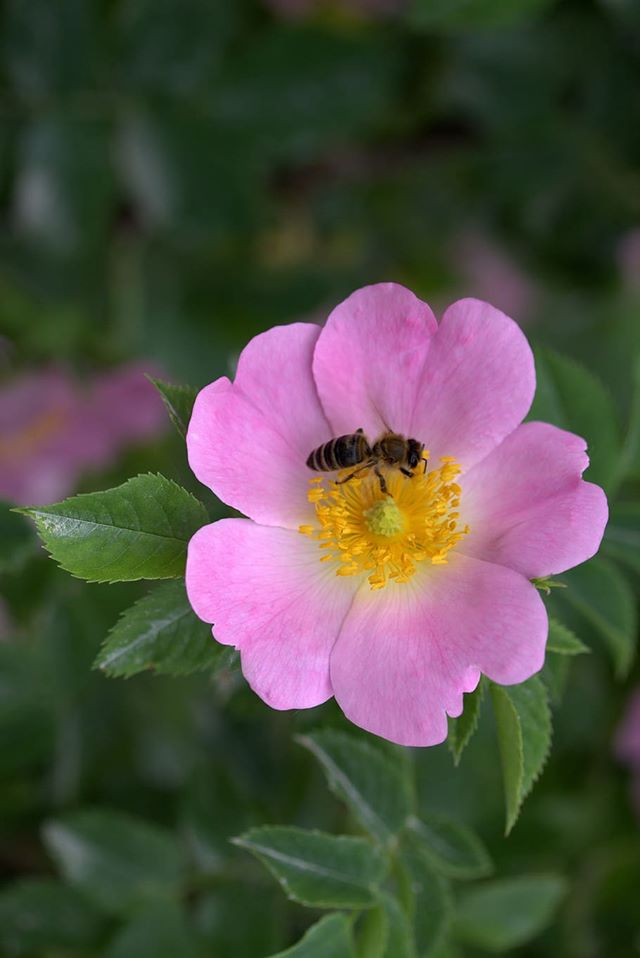
Enchanting Dog Rose (Source: Pxfuel)
Numerous cultivars have been named, though few are common in cultivation.
Rosa canina Abbotswood
Rosa canina ‘Assisiensis’ – only dog rose hybrid without thorns.
Rosa canina ‘Andersonii’
Whatever the pros and cons, dog rose is still a very beautiful and fragrant rose with its elegance and simplicity.
References:
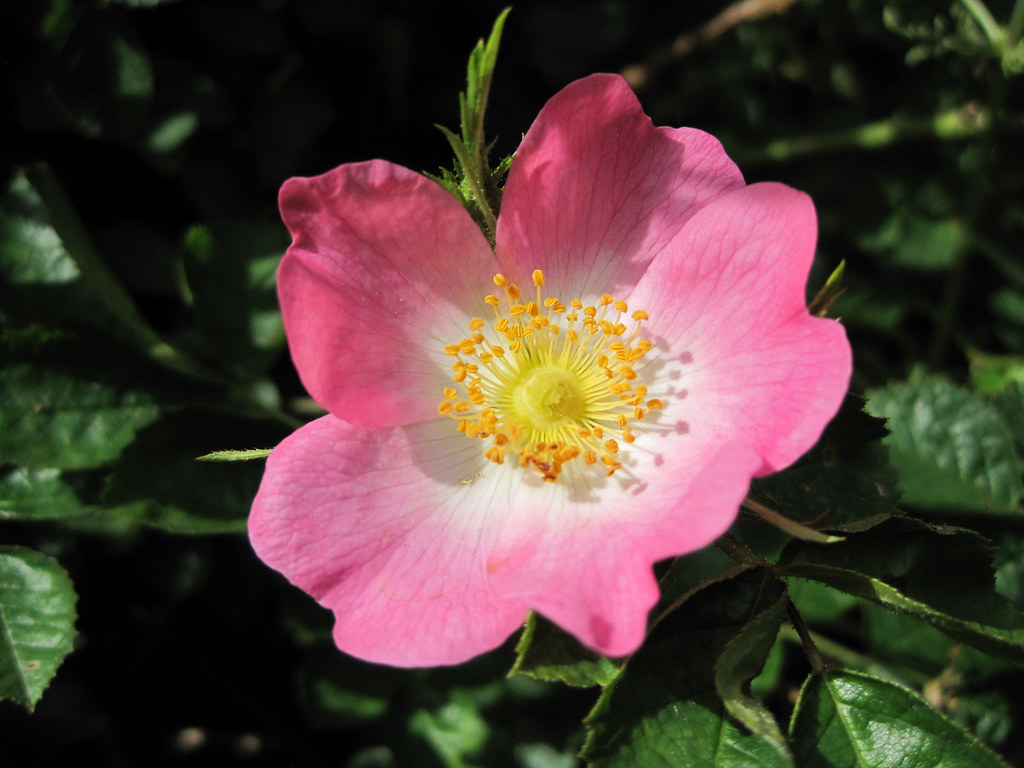 Sweet-Briar Rose (Photo credit : Andrew Coombes)
Sweet-Briar Rose (Photo credit : Andrew Coombes)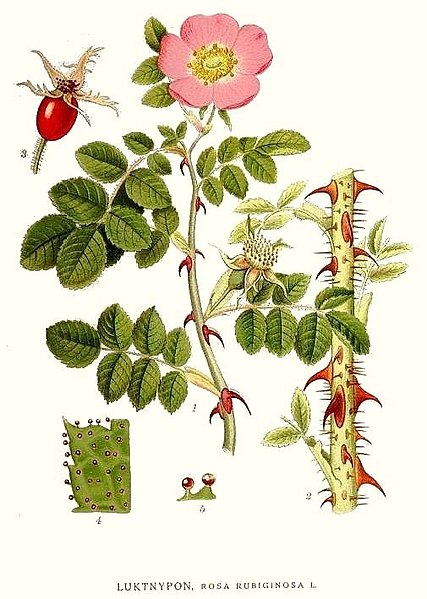 Botanical Drawing of Sweet-Briar Rose (By C. A. M. Lindman (1856–1928))
Botanical Drawing of Sweet-Briar Rose (By C. A. M. Lindman (1856–1928))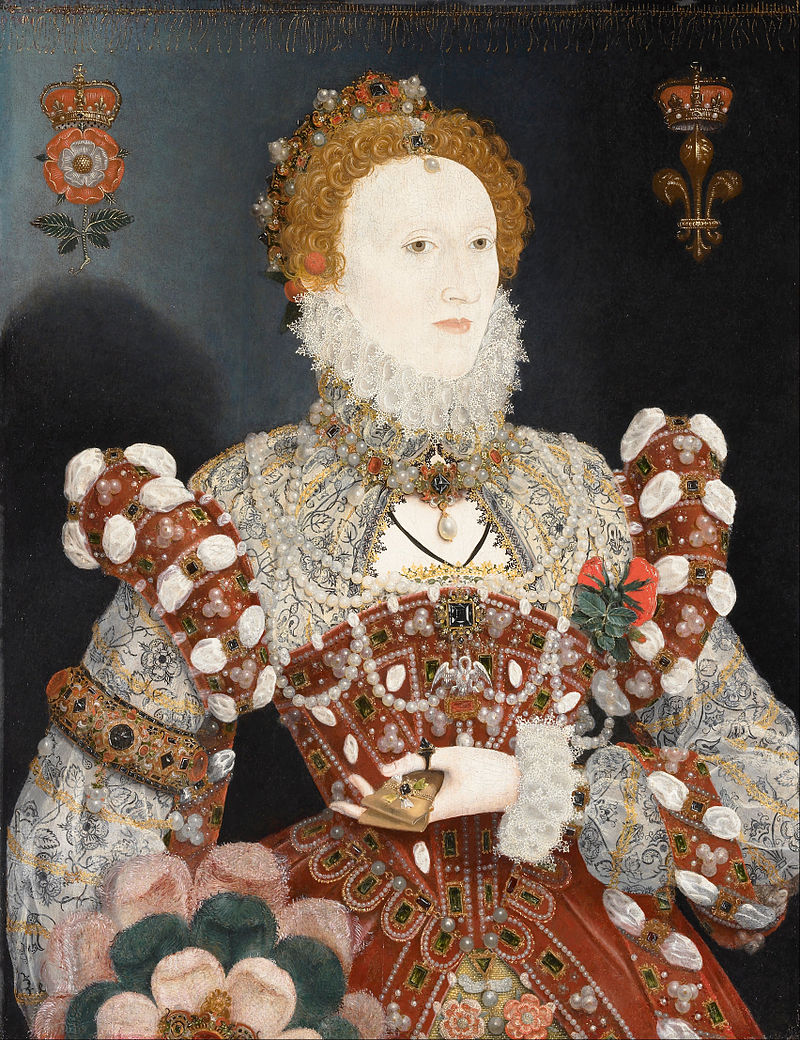
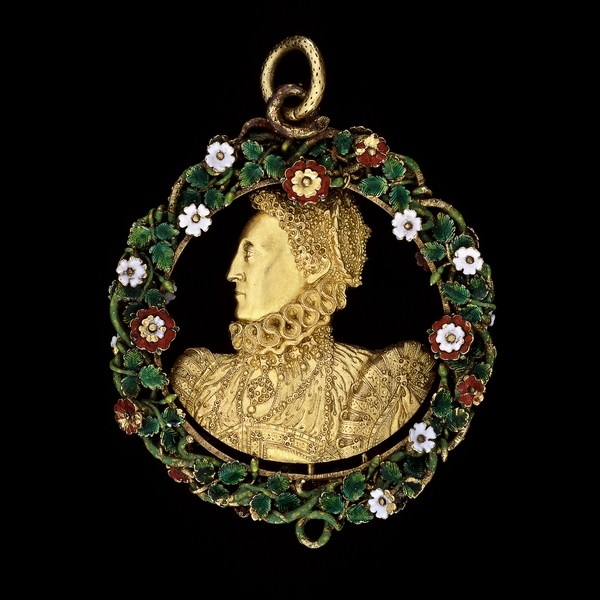

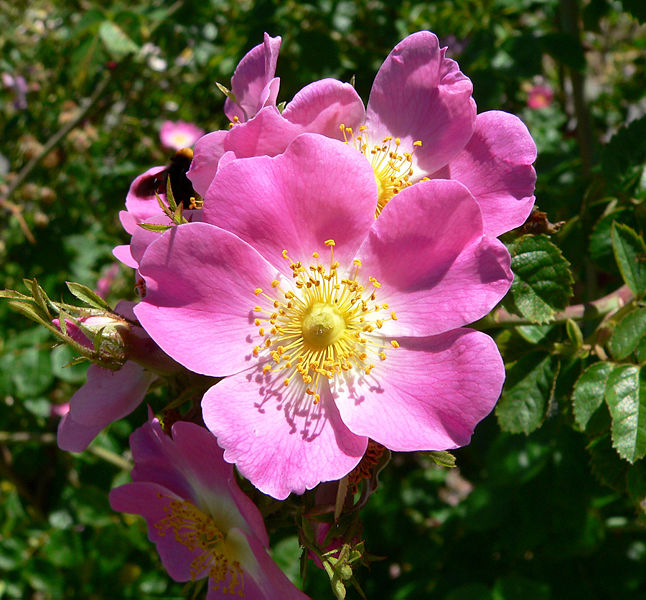








 Dog Rose Hips (Source: Pxfuel)
Dog Rose Hips (Source: Pxfuel)
